Equipment News: Focus on Surface Modification Equipment
March 1, 1998
Equipment News: Focus on Surface Modification Equipment
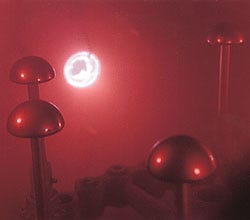
Coating equipment
A supplier of PVD coatings and technology to the medical device industry offers coating equipment for the deposition of biocompatible coatings. Coatings are deposited using various processes, including Ion Bond cathodic-arc PVD, enhanced-arc PVD, and unbalanced magnetron sputtering. The coatings adhere at temperatures as low as 150°F; therefore, all grades of stainless steel, Co-Cr-Mo alloys, and titanium alloys can be coated without affecting the metals' properties or dimensions. Ion Bond coatings provide increased wear and corrosion resistance to such medical devices as orthopedic implants, surgical blades and instruments, and dental handpieces. The high ionization rate and ion energy created by the plasma in the coating systems enable an intermixing of coating material into a device's surface to provide excellent adhesion. Multi-Arc Inc., 200 Roundhill Dr., Rockaway, NJ 07866.
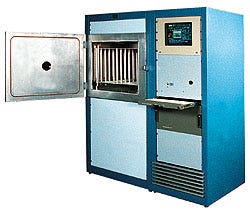
Plasma system
A plasma surface modification system is designed for medical device applications. The system can include custom vacuum chambers and electrode configurations. The company manufactures the system with high- and low-RF generators, computer and manual control systems, process temperature control, multiple gas flows, mass-gas-flow controllers, and automated vacuum chamber doors. Plasma Etch Inc., 3522 Arrowhead Dr., Carson City, NV 89706.
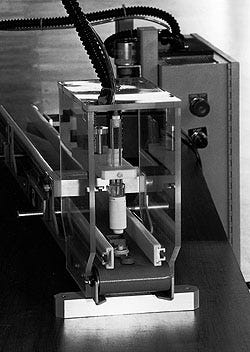
Plasma treatment system
A plasma treatment system is designed to increase the adhesion characteristics of almost any nonconductive material, including plastics, silicone rubber, resins, fluoropolymers, and Teflon. The PT-2000 is suitable for applications that require gluing, potting, marking, painting, or coating of a nonconductive material. The plasma generated is precisely controlled by a built-in programmable solid-state generator. The system operates in an open ambient environment, as opposed to the cumbersome vacuum chambers required for some plasma systems. Typical applications include the treatment of catheters, syringes, biomedical sensors, orthopedic and dental implants, electrical conductor shells, connector inserts, and PC boards. The turnkey system is available in several configurations specifically tailored to the medical industry. Tri-Star Technologies, 2201 Rosecrans Ave., El Segundo, CA 90245.
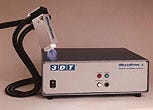
Corona treating equipment
A company manufactures corona treating equipment that can be used to treat such medical products as petri dishes, test panels, tubes, and other disposable labware. The single-headed MultiDyne 1 corona treating unit is easy to use, safe, and reliable, according to the manufacturer. The MultiDyne system offers treatment on polymer materials prior to printing, gluing, and laminating. The generator is connected to a single-phase power line of 100240 V, and it can be used as a stand-alone unit or interfaced to a manufacturing line. 3DT Inc., N. 114 W. 18850 Clinton Dr., Germantown, WI 53022.
Plasma cleaning unit
A plasma system performs ultracleaning in many medical devices including angioplasty balloons, catheters, filter materials, syringe hubs, and intraocular lenses. The B-Series machine features a patented gas-reversal function that ensures uniform surface exposure. The chamber size is custom designed to meet customer requirements. Because minimal power is required for plasma processing, the system has low operating costs and high productivity. The company's specialized software, the P2CIM, can be used to monitor temperatures and process values. Advanced Plasma Systems Inc., 12000 28th St. N., St. Petersburg, FL 33716.
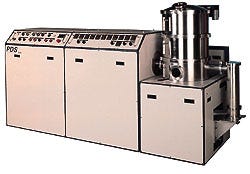
Vacuum deposition system
A vacuum deposition system is used for the application of parylene film to a variety of substrates, including medical components, implantables, and surgical hardware. The PDS-2060 automated system is designed for accurate and repeatable operation. The coating sequence is controlled by a programmable logic controller. Coating parameters, such as temperatures, vacuum levels, and dwell times, are continuously monitored by a fault alarm system, and a printed status chart is provided for each coating run. The system features interchangeable chamber modules to suit various coating applications. Coating chamber capacity ranges from 25 to 100 L. Specialty Coating Systems Inc., 5707 W. Minnesota St., Indianapolis, IN 46241.
You May Also Like

.png?width=300&auto=webp&quality=80&disable=upscale)
